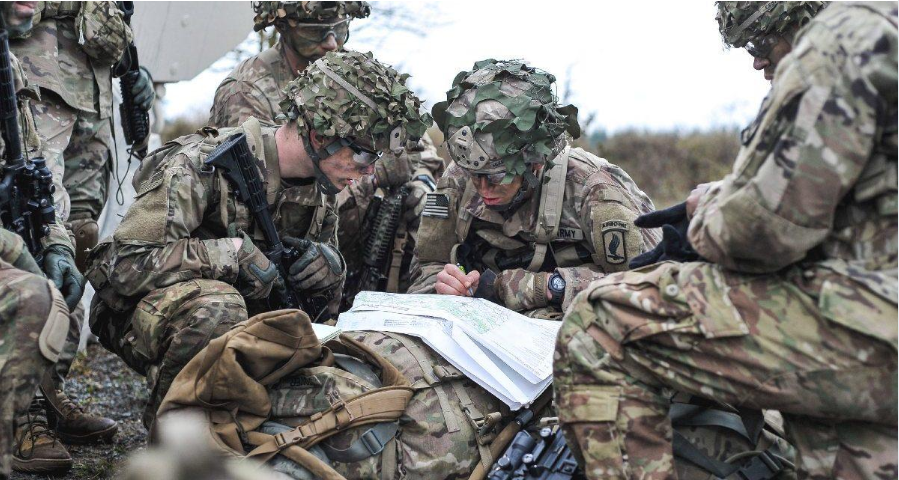Leadership in Combat: Key Traits and Strategies for Success on the Battlefield
Combat leadership presents a unique test for a leader’s ability to inspire, lead and make decisions in a pressure-cooker atmosphere. The stakes are high and margins razor thin: actions, decisions command not just mission success but determine whether those men aboard your aircraft will be alive tomorrow. Leadership in such an environment must combine traits from both mental and physical fortitude plus its own special skillset for tactics which works under these conditions. In this essay, we shall look at the key traits and measures of success on the battlefield for a combat leader.
1. **Courage and Steady Nerves Under Fire** One of the most essential qualities for a good combat leader is bravery. To have this is not only bravery in the sheer physical sense, but also an ability to stand up under heavy odds and make decisions when the result appears uncertain. In combat, a leader must retain a cool head even amidst the confusion of battle where everything is not clear, his troops are better able to keep their attention on task and maintain self-discipline. More important still, courage in leadership involves making decisions which calculate risks. Leaders often have to act without complete knowledge of the situation in combat settings like–and so on at such times their decision-making must be bold trust deeply rooted in their training, instincts and verifiable experience to keep up the battle’s tempo or strike when circumstances offer an opening.
2. **Adaptability and Maximum Give Combat is a continuously changing kind of thing. Regardless how well laid you have planned an operation, unplanned eventualities such as changes in weather conditions on the fighting ground or enemy tactics can entirely alter what was previously planned out beforehand. A leader who can change tack quickly to keep pace with events and thinks on his feet is likely to be far more successful than one who cannot make these adjustments in time.
Adaptability means not only that you can respond to change, but also that you are able to anticipate it. A good combat leader is always scanning the field, checking for new threats or opportunities and then adjusting his or her approach. Lower level leaders must be able to shift quickly from one mission into another. The difference in time can very often add up to the odds of success or defeat being determined by a nose. A canceller must be able to judge situations rapidly and accurately. This requires the ability to think clearly and prioritise.
Often leaders are faced with decisions where they have to consider the potential risks against possible pay-off, and all of this has to be made in a matter of seconds. It is not just a question of words, but also faith. A leader must be able to rely on subordinates carry out orders well while having trust in his/her own judgment and instincts. Hesitation or second-guessing oneself creates confusion and undercuts confidence in the leader’s judgment, ultimately sapping the unit’s ability to perform.
Communication and a Clear Objective Clear and effective communication is critical in the high-stakes world of combat. A leader must be able to issue clear orders briefly and make sure that every soldier knows the mission’s goals and his or her specific role. Misunderstandings on the battlefield can lead soldiers into terrible situations, from friendly fire incidents to lost opportunities for victory. In addition to giving tactical orders, good combat leaders also are able to instill in their men a sense of purpose. To have a reason to fight is not just about other reason. Soldier who understands the mission’s strategic goals and believe in it are motivated and resistant even in the face of adversity.
Emotion Intelligent and Empathy**
Emotional intelligence is often overlooked as a critical trait for combat leadership, yet it is absolutely essential. Combat places tremendous psychological strain on soldiers who are belittled by terror, exhaustion, and fatigue. A leader who can understand and handle these emotions is better equipped to sustain morale and unit cohesion.
Empathy enables leaders to reach out to their soldiers on a personal level. Understanding the fears and concerns of those under their command helps leaders to extend exactly right type of support, whether it is by cheering on troops, taking decisive action, or simply facing off against the enemy in close combat with one ‘s own party. This emotional connection can build trust and loyalty, resulting in a more cohesive and effective fighting force.
Strategic Vision and Tactical Expertise
Come what may, competences such as boldness, versatility, and communication are of course indispensable. a combat leader must be deeply grounded on tactics as well. Knowing the terrain very well, aware of enemy capabilities (so as not to underestimate them), and conversant with his own forces’ strengths and weaknesses enable a leader to develop strategies that will maximize chances of success at execution time.
However, strategic vision goes far beyond the immediate field of battle. A good leader must know how his actions fit into the larger picture of the mission as a whole and the overall war effort. That means thinking a play or two ahead, reverberating through effects on future operations, and bringing tactical acts into harmony with broad strategic aims.
Tactical expertise also demands effective resource management. This requires knowing when to advance boldly and when to hold back reserves for later battles. Combat leaders must be adept at managing personnel, gear and ammunition alike in order to ensure that their forces are ready for prolonged operations.
Resilience and Endurance
During a battle simulation where all the adrenaline running through its system makes you feel invincible but then collapses into tears afterwards from sheer exhaustion. Combat leaders must convince themselves to endure, overcome setbacks and continue fighting For without this attitude nobody else in the group will be able to take heart and follow suit The example shown by chiefs of staff who nonetheless persist even under life-threatening conditions is one which lasts a lifetime. Doing so is also the best answer for the rank and file who now must face a struggle such as that faced by none before.
In the face of adversity, a combat leader must have resilience, able to bounce back from setbacks and stay focused on his task. This kind of resilience sets an example for the troops, encouraging them to endure trials even in the toughest conditions.
Endurance therein is not just physical but mental. Combat leaders often spend days with little sleep or rest. Instead of getting any relief, they must still remain a constant factor affecting events. To be able to continue working under such fatigue and yet to be composed and rational in thought this requirement Chairman Mao Zedong told us really is extraordinary a note of strong leadership.
Leading by Example
The key attribute of a successful combat leader is that he/she leads by example. The qualities that a leader asks soldiers to strive for are most readily embraced by them if they can see those virtues incarnated in their leader. Leaders who themselves exhibit bravery, endurance and dedication will encourage those under their command to do likewise.
Leading by example also means giving up material comfort. Leaders on the firing line taking risks and suffering discomfort with troops earn credibility through repeated practice of such behavior over time: they receive the implicit and unstinting support of their men. This factor remoteness can have a very significant impact on both morale and operational efficiency for a unit.
Summary
Combat leadership is a multi-faceted and demanding role, requiring a blend of personal qualities, tactical expertise and the ability to inspire others. Courage, adaptability, clear decision-making skills and effective communication all provide a strong foundation for leadership which can produce results. Emotional intelligence too is essential in creating an environment where troops can function successfully under extreme pressure; it provides leaders with an understanding of how best to sustain their subordinates through tough times and ensure that they don’t let matters get out of hand.
The most successful combat leaders are those who can keep their strategic eye open and at the same time look after the well-being of their troops. By leading from up front and setting an example with the principles that they want to inculcate, such leaders ensure that their units stay together and moving as one, motivated for success even in highly challenging environments.









